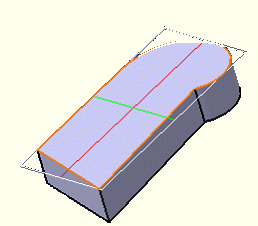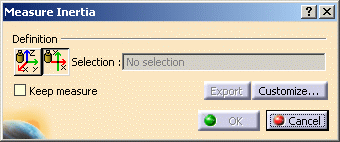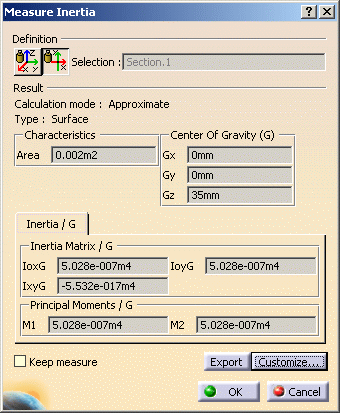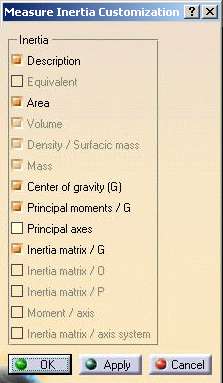|
The dialog box identifies the selected item, in our
case a DMU section, and indicates whether the calculation is exact or
approximate:
-
In Design mode, measures access exact data and
wherever possible true values are given. Note that it is possible
to obtain an exact measure for most items in design mode.
-
In Visualization mode, measures are made on
tessellated items and approximate values are given.
In addition to the center of gravity G, the principal
moments of inertia M and the
matrix of
inertia, the dialog box also gives the area of the selected item.
The center of gravity G is computed with respect to
the document axis system. The matrix of inertia is expressed in an
axis system whose origin is the center of gravity and whose vectors
are the axes of inertia. |
|
The number of decimal places, the display of trailing
zeros and limits for exponential notation is controlled by the Units
tab in the Options dialog box (Tools > Options,
General > Parameters and Measure).
To find out more about
notations
used |
In the Geometry Area
The axes of inertia are highlighted and a bounding
box parallel to the axes and bounding the selected item also appears.
To obtain the same type of inertia matrix for
similar shapes independent from the space orientation
of the surface being measured (i.e. invariant); the x-axis is set along the
Principal Moment axis with the smallest value (M1), i.e. along the
longest side (red) and the y-axis is set along the second Principal
Moment axis (M2) (green).
Principal Axis matrix (A) expresses the axes orientations in the
Global Axis System.
|
 |
|
Color coding of axes:
The principal axes are invariant within the
object i.e. they are independent from the object's space
orientation.
|
|



